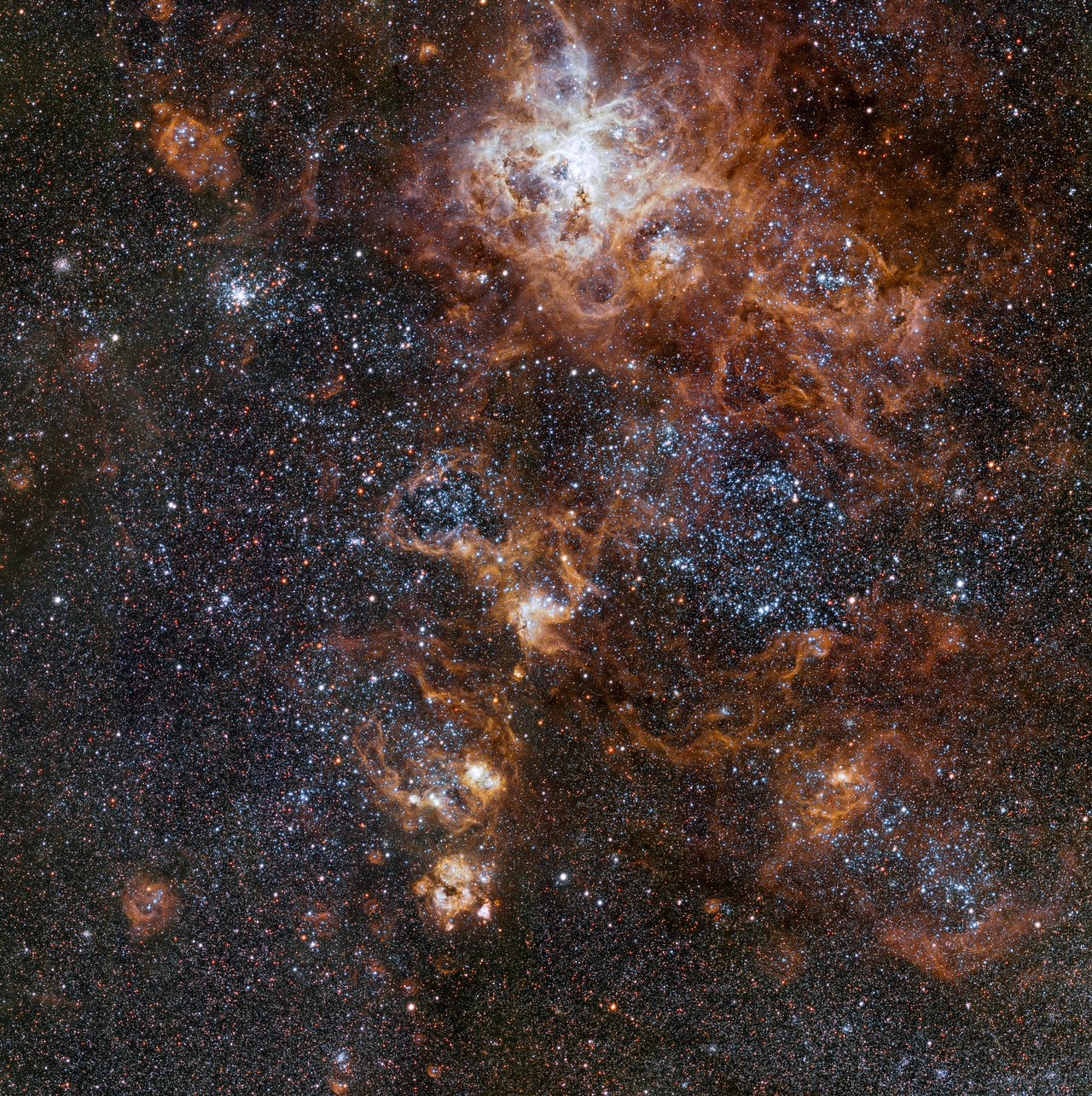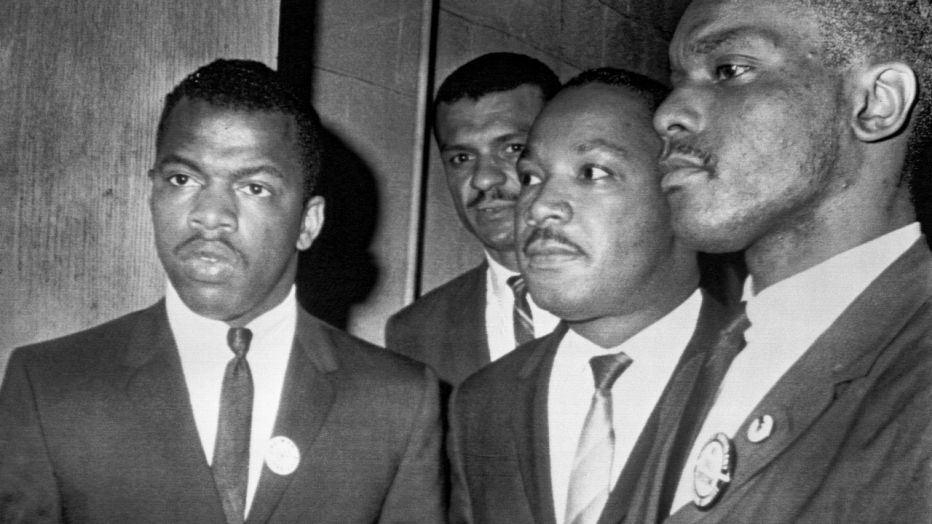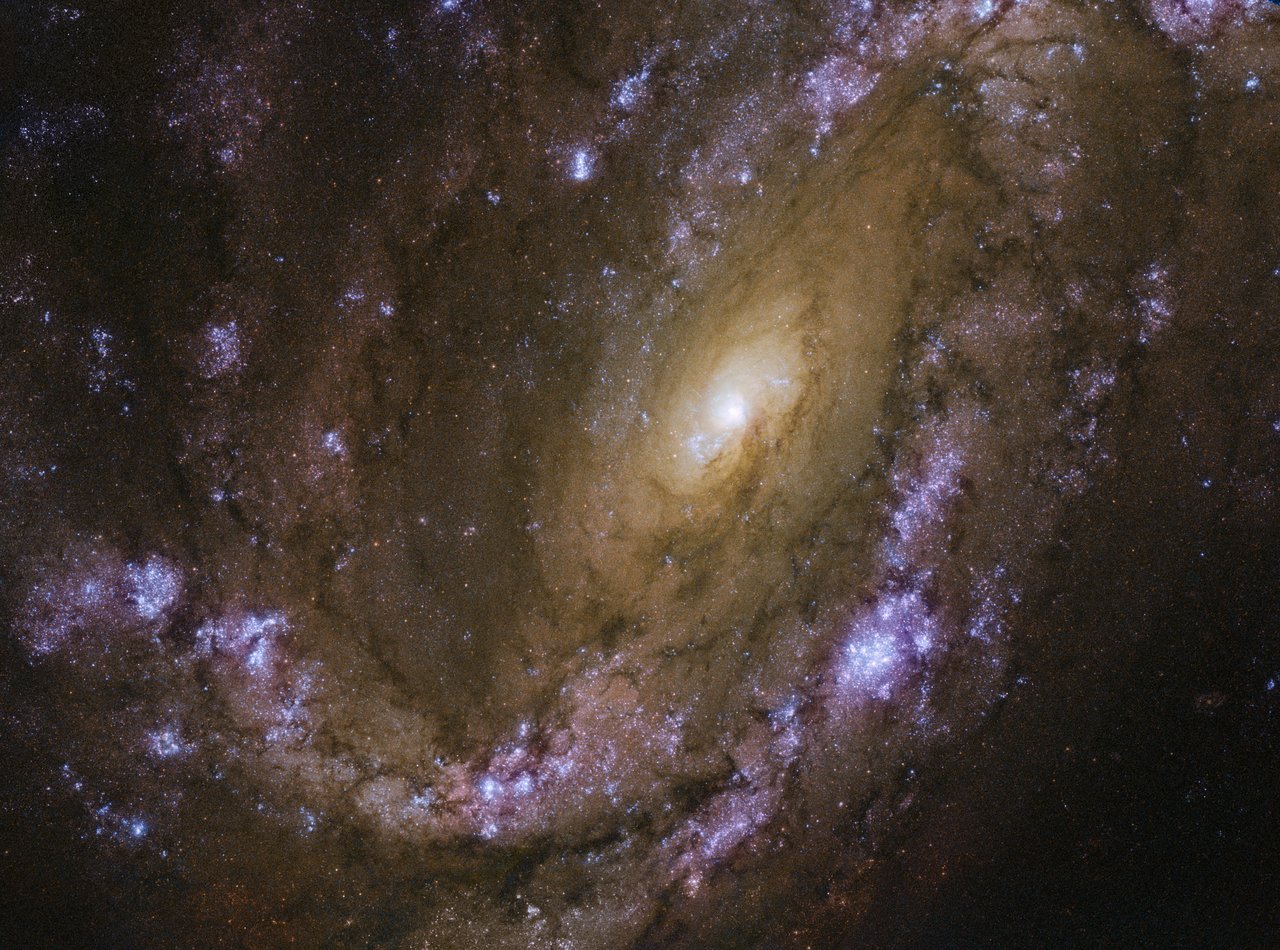Blog
Glowing brightly about 160 000 light-years away, the Tarantula Nebula is the most spectacular feature of the Large Magellanic Cloud, a satellite galaxy to our Milky Way. This image from VLT Survey Telescope at ESO’s Paranal Observatory in Chile shows the region and its rich surroundings in great detail. It reveals a cosmic landscape of star clusters, glowing gas clouds and the scattered remains of supernova explosions.

Keith Richard Godchaux (July 19, 1948 – July 23, 1980) was a pianist best known for his tenure in the rock group the Grateful Dead from 1971 to 1979.
Godchaux was born in Seattle, Washington, and grew up in Concord, California, a regional suburban center within the East Bay of the San Francisco Bay Area. He began piano lessons at age five at the instigation of his father (a semi-professional musician) and subsequently played Dixieland and cocktail jazz in professional ensembles as a teenager. According to Godchaux, “I spent two years wearing dinner jackets and playing acoustic piano in country club bands and Dixieland groups…I also did piano bar gigs and put trios together to back singers in various places around the Bay Area…[playing] cocktail standards like ‘Misty’ the way jazz musicians resentfully play a song that’s popular – that frustrated space… I just wasn’t into it… I was looking for something real to get involved with – which wouldn’t necessarily be music”. He met and married former FAME Studios session vocalist Donna Jean Thatcher in November 1970; their son Zion, of the band BoomBox, was born in 1974.
The couple introduced themselves to Jerry Garcia at a concert in August 1971; coincidentally, ailing keyboardist/vocalist Ron “Pigpen” McKernan (who would go on to play alongside Godchaux from December 1971 to June 1972) was unable to handle the rigors of the band’s next tour. At the time, Godchaux was largely supported by his wife and irregularly employed as a lounge pianist in Walnut Creek, California. While he was largely uninterested in the popular music of the era and eschewed au courant jazz rock in favor of modal jazz, bebop, and swing, several sources[who?] claim that he collaborated with such rock acts as Dave Mason and James and the Good Brothers, a Canadian trio acquainted with the Grateful Dead.
more...Philip Upchurch (born July 19, 1941, Chicago, Illinois, United States) is an American blues, jazz and R&B guitarist and bassist.
Upchurch started his career working with the Kool Gents, the Dells, and the Spaniels, before going on to work with Curtis Mayfield, Otis Rush, and Jimmy Reed. (His association with Kool Gents member Dee Clark would continue, including playing guitar on Clark’s 1961 solo hit “Raindrops“.) He then returned to Chicago to play and record with Woody Herman, Stan Getz, Groove Holmes, B.B. King, and Dizzy Gillespie.
In 1961, his record “You Can’t Sit Down” by the Philip Upchurch Combo, sold over one million copies and was awarded a gold disc. “You Can’t Sit Down, Part 2” peaked at No. 29 on the Billboard charts in the US. And he released his first album. In the 1960s he toured with Oscar Brown, appearing on the 1965 live album, Mr. Oscar Brown, Jr. Goes to Washington. In the mid-1960s he was house guitarist of Chess Records and he played with The Dells, Howlin’ Wolf, Muddy Waters and Gene Chandler. He also played with John Lee Hooker, Grover Washington, Jr.and Cannonball Adderley. Upchurch was part of a group called the Soulful Strings during the 1960s, prior to working with Rotary Connection on Chess’s Cadet label.
In the 1970s, he worked with Donny Hathaway, Harvey Mason, Ramsey Lewis, Quincy Jones and led his own quartet with Tennyson Stephens. He met Bob Krasnow and Tommy LiPuma, the founders of Blue Thumb Records, and he released “Darkness Darkness”. Upchurch played on Donny Hathaway’s “This Christmas” and “The Ghetto”. He also played guitar on Hathaway’s “Live” album (1972). In the mid 1970s and 1980s, he performed with George Benson, Mose Allison, Gary Burton, Lenny Breau, Joe Williams, Chaka Khan, Natalie Cole, Carmen McRae, Cat Stevens, David Sanborn, and Michael Jackson. In the 1990s he worked with Jimmy Smith and Jack McDuff.
more...Carmell Jones (July 19, 1936 – November 7, 1996) was an American jazz trumpet player.
Jones was born in Kansas City, Kansas. He started piano lessons at age five, and trumpet lessons at age seven. His first professional work was with Kansas City greats Nathan Davis, Cleanhead Vinson and Frank Smith. He moved to California in 1960 and worked as a studio musician for several years, including in the orchestras for two movie soundtracks, ‘The Seven Days In May‘ and ‘The Manchurian Candidate‘, the latter starring Frank Sinatra. He released two albums as a leader for Pacific Jazz at this time, while recording as a sideman with Bud Shank, Onzy Matthews, Curtis Amy, Harold Land, and Gerald Wilson. He toured with Horace Silver in 1964-65, and was on Silver’s seminal 1965 Blue Note album Song for My Father. In 1965 he moved to Germany where he lived for 15 years, working with Paul Kuhn and the SFB Big Band (Sender Freies Berlin) from 1968 to 1980. There he worked with musicians such as Milo Pavlovic, Herb Geller, Leo Wright, Rudi Wilfer and Eugen Cicero. Jones returned to the US in 1980, working as a teacher and appearing at local clubs in Kansas City. He released one additional album as a leader in 1982 entitled “Carmell Jones Returns,” on the Revelation label. Jones died on November 7, 1996 in Kansas City at the age of 60.
In 2003, Mosaic Records released a three-CD set of Jones material in their Mosaic Select series.
more...Bobby Lee Bradford (born July 19, 1934) is an American jazz trumpeter, cornetist, bandleader, and composer. He is noted for his work with Ornette Coleman. In October 2009, Bradford became the second recipient of the Festival of New Trumpet Music‘s Award of Recognition.
Bobby Lee Bradford’s life began in Mississippi; he and his family then moved to Dallas, Texas, in 1946. He moved to Los Angeles, California, in 1953 where he reunited with Ornette Coleman, whom he had previously known in Texas. Bradford subsequently joined Coleman’s ensemble, but was drafted into the U.S. Air Force and replaced by Don Cherry.
After playing in military bands from late 1954 to late 1958, he rejoined Coleman’s quartet from 1961 to 1963, which infrequently performed in public, but was indeed recorded under Coleman’s Atlantic contract. These tapes were among those many destroyed in the Great Atlantic Vault Fire. Freddie Hubbard acted as Bradford’s replacement upon his departure to return to the West Coast and pursue further studies. Bradford soon began a long-running and relatively well-documented association with the clarinetist John Carter, a pairing that brought both increased exposure at international festivals (though the records remain scantily available, when one excludes web rips and bootlegs). Following Carter’s death in 1991, Bradford fronted his own ensemble known as The Mo’tet, with which he has continued to perform since. He is the father of drummer Dennis Bradford and jazz vocalist Carmen Bradford.
more...
https://www.youtube.com/watch?v=xCoSiT57c0E
more...https://www.youtube.com/watch?v=RQlTAmqH2QU&list=PLEB3LPVcGcWZ0hsQ5_jgSMhawAnDzy1io&index=3&t=8s
more...Images of his beating at Selma shocked the nation and led to swift passage of the 1965 Voting Rights Act. He was later called the conscience of the Congress.
Representative John Lewis, a son of sharecroppers and an apostle of nonviolence who was bloodied at Selma and across the Jim Crow South in the historic struggle for racial equality, and who then carried a mantle of moral authority into Congress, died on Friday. He was 80.
His death was confirmed in a statement by Nancy Pelosi, the speaker of the House of Representatives.
Mr. Lewis, a Georgia Democrat, announced on Dec. 29 that he had Stage 4 pancreatic cancer and vowed to fight it with the same passion with which he had battled racial injustice. “I have been in some kind of fight — for freedom, equality, basic human rights — for nearly my entire life,” he said.
On the front lines of the bloody campaign to end Jim Crow laws, with blows to his body and a fractured skull to prove it, Mr. Lewis was a valiant stalwart of the civil rights movement and the last surviving speaker from the March on Washington for Jobs and Freedom in 1963.
More than a half-century later, after the killing in May of George Floyd, a Black man in police custody in Minneapolis, Mr. Lewis welcomed the resulting global demonstrations against police killings of Black people and, more broadly, against systemic racism in many corners of society. He saw those protests as a continuation of his life’s work, though his illness had left him to watch from the sidelines.

When massive stars die at the end of their short lives, they light up the cosmos with bright, explosive bursts of light and material known as supernovae. A supernova event is incredibly energetic and intensely luminous — so much so that it forms what looks like an especially bright new star that slowly fades away over time.
These exploding stars glow so incredibly brightly when they first form that they can be spotted from afar using telescopes such as the NASA/ESA Hubble Space Telescope. The subject of this image, a spiral galaxy named NGC 4051 — about 45 million light-years from Earth — has hosted multiple supernovae in past years. The first was spotted in 1983 (SN 1983I), the second in 2003 (SN 2003ie), and the most recent in 2010 (SN 2010br). These explosive events were seen scattered throughout the centre and spiral arms of NGC 4051.
The SN 1983I and SN 2010br were both categorised as supernovae of type Ic. This type of supernova is produced by the core collapse of a massive star that has lost its outer layer of hydrogen and helium, either via winds or by mass transfer to a companion. Because of this, type Ic — and also type Ib — supernovae are sometimes referred to as stripped core-collapse supernovae.
NGC 4501 sits in the southern part of a cluster of galaxies known as the Ursa Major I Cluster; this cluster is especially rich in spirals such as NGC 4051, and is a subset of the larger Virgo Supercluster, which also houses the Milky Way.

American singer-guitarist Lonnie McIntosh (July 18, 1941 – April 21, 2016), known as Lonnie Mack, was a pioneer of blues-rock music and rock guitar melodic soloing.
Mack emerged in 1963 with the LP, The Wham of that Memphis Man. The album earned him lasting renown both as a blue-eyed soul singer and as a rock guitar style innovator.
In the album’s instrumental tracks, Mack introduced “edgy, aggressive, loud, and fast” blues melodies and runs to the chords-and-riffs format of early rock guitar. These tracks elevated the standard for rock guitar proficiency and led early in the electric guitar’s rise to the top of melodic soloing instruments in rock. As the 1960s progressed, these tracks formed a stylistic “model” for lead guitarists of two new genres, blues-rock and Southern rock.
Shortly after the album’s release, however, the massively popular “British Invasion” hit American shores, and Mack’s career “withered on the vine”.He marked time until 1968, when Rolling Stone magazine rediscovered him and Elektra Records signed him to a three-album contract. He was soon performing in major venues, but his multi-genre Elektra albums underplayed his blues-rock appeal and record sales were tepid. Mack left Elektra in 1971. He spent the next fourteen years as a low-profile country music recording artist, roadhouse performer, sideman, and music-venue proprietor.
In 1985, Mack resurfaced with a successful blues-rock LP, Strike Like Lightning, a promotional tour featuring celebrity guitarist sit-ins, and a concert at Carnegie Hall. In 1990, he released another well-received blues-rock album, Lonnie Mack Live! Attack of the Killer V, then retired from recording. He continued to perform, mostly in smaller venues, until 2004.
Shortly before Mack’s birth, his family moved from Appalachian eastern Kentucky to Dearborn County, Indiana, on the banks of the Ohio River. One of five children, he was born to parents Robert and Sarah Sizemore McIntosh on July 18, 1941, in West Harrison, Indiana, near Cincinnati, Ohio. He was raised on a series of nearby sharecropping farms.
more...Mthutuzeli Dudu Pukwana (18 July 1938 – 30 June 1990) was a South African saxophonist, composer and pianist (although not known for his piano playing).
Dudu Pukwana was born in Walmer Township, Port Elizabeth, South Africa. He grew up studying piano in his family, but in 1956 he switched to alto sax after meeting tenor sax player Nikele Moyake. In 1962, Pukwana won first prize at the Johannesburg Jazz Festival with Moyake’s Jazz Giants (1962 Gallo/Teal). In his early days he also played with Kippie Moeketsi. Chris McGregor then invited him to join the pioneering Blue Notes sextet,where he played along with Mongezi Feza, Nikele Moyake, Johnny Dyani and Louis Moholo. Although the Blue Notes are often considered McGregor’s group, Pukwana was initially the principal composer and all the group members had pivotal roles.
As mixed-race groups were illegal under apartheid, the Blue Notes, increasingly harassed by authorities, emigrated to Europe in 1964, playing in France and Zürich, and eventually settling in London. After The Blue Notes split in the late 1960s, Pukwana joined McGregor’s Brotherhood of Breath big band, which again featured his soloing heavily. As a composer Pukwana wrote “Mra,” one of the best-loved tunes by the Brotherhood.
In February 1967, Pukwana received his first mention in America’s DownBeat magazine: “Tenorist Ronnie Scott’s Old Place, having a hard time breaking even, scored a financial success with the Bob Stuckey Trio, featuring the leader’s organ and altoist Dudu Pukwana”. The trio later expanded to a quartet when Phil Lee joined on guitar,and this group performed twice on BBC’s Jazz Club. As a quartet the band also had a regular session at the Witches Cauldron in Belsize Park. The band completed a series of UK dates throughout 1967, including regular appearances at Ronnie Scott’s Jazz Club.
more...Federico Arístides Soto Alejo (June 30, 1930 – February 4, 2008), better known as Tata Güines, was a Cuban percussionist, bandleader and arranger. He was widely regarded as a master of the conga drum, and alongside Carlos “Patato” Valdés, influential in the development of contemporary Afro-Cuban music, including Afro-Cuban jazz. He specialized in a form of improvisation known as descarga, a format in which he recorded numerous albums throughout the years with Cachao, Frank Emilio Flynn, Estrellas de Areito, Alfredo Rodríguez and Jane Bunnett, among others. In the 1990s he released two critically acclaimed albums as a leader: Pasaporte and Aniversario. His composition “Pa’ gozar” has become a standard of the descarga genre.
Arístides Soto was born in Güines, a town east of Havana in the former province of Havana in Cuba, on June 30, 1930. He grew up with his parents and his seven siblings, leaving school after year 4 to work as a shoeshiner and paperboy. His mother, María de los Ángeles Soto, took care of the house, while his father José Alejo Vasallo “Joseíto” was a cane worker. He was exposed to music from a young age; Joseíto played the tres in the Sexteto Partagás and used to jam with Arsenio Rodríguez, who lived nearby. Tata made his first bongó-like drums out of a sausage jar and a carton of milk in order to join them on percussion. He taught himself the conga by listening to recordings on the radio and playing at concerts, balls and jam sessions as an amateur. He played in his father’s group, as well as in Las Estrellas Nacientes, directed by his uncle Dionisio. He considered Chano Pozo el maestro (the master) and had the opportunity to play with him; Chano encouraged him and Tata never forgot the experience.
https://www.youtube.com/watch?v=Q7IDGvj8vXk
more...Jalacy “Screamin’ Jay” Hawkins (July 18, 1929 – February 12, 2000) was an American singer-songwriter, musician, actor, film producer, and boxer. Famed chiefly for his powerful, operatic vocal delivery and wildly theatrical performances of songs such as “I Put a Spell on You“, he sometimes used macabre props onstage, making him an early pioneer of shock rock.
I have been invited to my 3rd Club Calabash with other local Reggae/Caribbean singers in town. I will do 2 acoustic Marley numbers. Selassie is the Chapel Nyabinghi and Put it On/Rude Boy Ska with looper not tracks.

More Posts
- RHYTHM ROOTS WORKSHOP 2-28-18
- The Cosmos with NGC 613
- Brian Jones Day
- John Fahey Day
- Willie Bobo Day
- World Music with Tal National
- Daily Roots with Joya Landis
- RHYTHM ROOTS WORKSHOP 2-27-18
- The Cosmos with NGC 3521
- Harold Jones Day
- Dexter Gordon Day
- World Fusion with Jenny & the Mexicats
- Daily Roots with Tommy McCook
- The Cosmos with NGC 4450
- Guy Klucevsek Day
- Fats Domino Day
- World Music with Arany Zoltán
- Daily Roots with Winston McAnuff and the Black Kush Band
- The Cosmos with AE Aurigae
- Ray Perry Day